Korean Architecture
1/42
There's no tags or description
Looks like no tags are added yet.
Name | Mastery | Learn | Test | Matching | Spaced |
|---|
No study sessions yet.
43 Terms
Korean Architecture
Characterized by a strong emphasis on harmony with nature, simplicity, and functionality.
It reflects Korean values of balance, practicality, and a deep connection to the environment.
Geographical Influence
The impact of Korea's mountainous landscape and proximity to water on architectural design.
Mountainous Landscape
Temples and palaces are often built into mountain slopes to harmonize with nature.
Water Proximity
Orientation of buildings to take advantage of ocean views and breezes due to Korea being a peninsula.
Three Kingdoms Period
A time when distinct Korean architectural forms developed, influenced by China and Buddhism.
Goryeo Dynasty
An era known for flourishing Buddhist architecture and grand temple complexes.
Joseon Dynasty
A period where Confucianism influenced the design of royal palaces and academies.
Ondol
A unique underfloor heating system used in traditional Korean homes for winter warmth.
Wide Eaves
Designed to provide shade in summer and protect against heavy rainfall during monsoon seasons
Ventilation and Cooling
In summer, traditional Korean houses (hanok) have open layouts with sliding doors, allowing for cross- ventilation and airflow.
Maru
an elevated wooden floor platform, is used as a cool space for seating during hot weather.
Hanok
A traditional Korean house designed during the Joseon dynasty, reflecting simplicity and functionality.
Japanese Colonial Period
During this period, many traditional Korean structures were destroyed, and Japanese architectural elements were introduced.
Modern Influence
Post-World War II, Korea saw rapid urbanization and industrialization, leading to a blend of traditional styles with modern architecture, including skyscrapers and modernist structures in cities like Seoul.
Buddhism
Confucianism
Shamanism
Religious Influence
Korean Architecture have been greatly influenced by these following religion:
Buddhist Temples
Structures that blend with nature and often feature symbolic forms like lotus motifs.
Sansa Temple
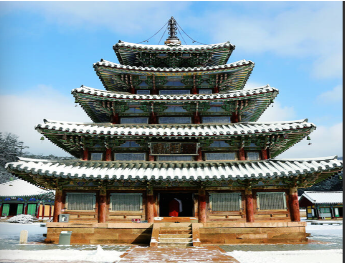
Iljumun
Called the "One-Pillar Gate", because when viewed from the side the gate appears to be supported by a single pillar.
The first gate at the entrance to many Korean Buddhist temples.
Jeollaman-do Iljumun Gate, Songgwangsa Temple
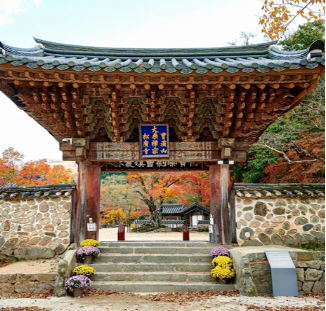
Confucianism
Influenced palace designs and the organization of spaces based on social hierarchy.
Royal Tombs of Joseon Dynasty
Tombs that follow specific layouts to honor deceased royal members.
Munmyo
Is also the general Korean term for a temple of Confucius.
It houses a shrine to Confucius known as Daeseongjeon, or "Hall of Great Achievement."
Pagodas
Key features of Korean religious architecture, often made of stone and used for Buddha statues.
Hongsalmun
Also called hongjeonmun or hongmun
A red spiked gate used for entering sacred places including Korean Confucian sites such as shrine, tombs and academiers
Temples
Palaces
Fortresses
Tombs
Pagodas
Ancient Structures
Some of the most significant ancient architectural works in Korea are
Gyeongbokgung Palace
Seoul, Originally built in 1395 during the Joseon Dynasty, this palace is a quintessential example of traditional Korean palatial architecture, characterized by aymmetry, wood construction, and beautiful gardens.
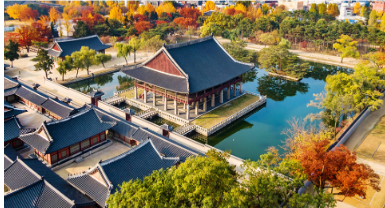
Gyeongbokgung Palace
Seoul. During Spring time season.
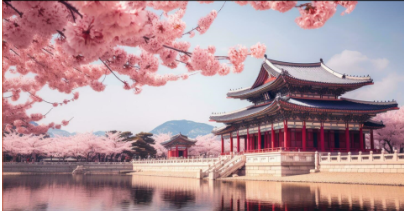
Bulguksa Temple
Built in 528 CE during the Sille Dynasty, this Buddhist temple is known for its stone pagodas and exquisiter wooden halls, exemplifying harmony with nature. The temple became a UNESCO World Heritage site in 1995
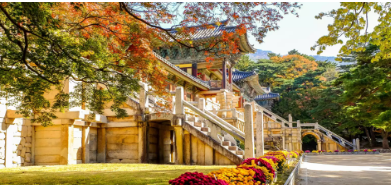
Seokguram Grotto
An artificial cave temple dating back to the 8th century, I houses a massive store Buddha statue. The grotto represents a sophisticated understanding of geometry and spirituality.
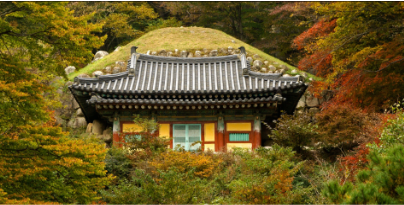
Hwangnyongsa Temple
Originally built in the 7th century, this wooden pagoda was the tallest of its kind in East Asia before its destruction.
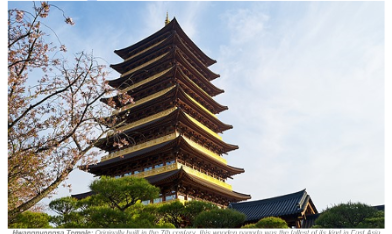
Wooden Framework (Gongpo)
Post and Lintel System
Stone Construction
Ondol Heating System
Particular Construction Methods
Post and Lintel System
A common method in ancient Korean architecture, in which vertical posts supported horizontal beams.
This system is seen in most traditional Korean houses (Hanoks), palaces, and temples.
Hanok
is a traditional Korean house.
Dabotap
Stones were often used for foundations, pagodas, and fortifications.
Korean stonemasonry is evident in structures like the Dabotap and Seokgatap pagodas at Bulguksa, which combine aesthetic beauty with stability.

chimi
(roof ridge
Seasonal Extremes
Architectural adaptations in response to Korea's distinct seasons, including wide eaves for shade.
Gongpo
A wooden beam-and-bracket system used in traditional Korean architecture for flexibility and durability.
Geomancy (Pungsu-jiri)
A belief system influencing the placement of buildings to harmonize with the landscape.
Dancheong
A traditional decorative painting style using bright colors for aesthetic and symbolic purposes.
Giwa
Roof tiles that are both functional and ornamental, often featuring symbolic engravings.
Carved Wooden Brackets
Intricately designed supports in roofs that add artistic beauty to structures.
Modern Influence
The blend of traditional styles with modern architecture in post-World War II Korea.
Strong emphasis on harmony with nature, simplicity, and functionality.
Buddhism: Iljumun
Confucianism: Hongsalmun
Ondol Heating System
Hanok; Korean traditional house
QUICK RECAP: Korean